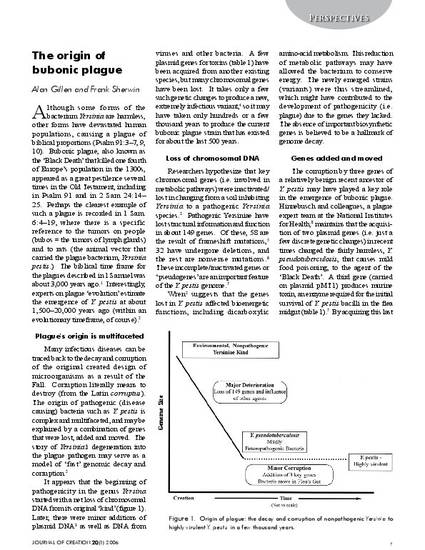
Although some forms of the bacterium Yersinia are harmless, other forms have devastated human populations, causing a plague of biblical proportions (Psalm 91:3-7, Psalm 91:9-10,). Bubonic plague, also known as the ‘Black Death’ that killed one fourth of Europe’s population in the 1300s, appeared as a great pestilence several times in the Old Testament, including in Psalm 91 and in 2 Samuel 24:14-25. Perhaps the clearest example of such a plague is recorded in 1 Samuel 6:4-19, where there is a specific reference to the tumors on people (bubos = the tumors of lymph glands) and to rats (the animal vector that carried the plague bacterium, Yersinia pestis.) The biblical time frame for the plagues described in 1 Samuel was about 3,000 years ago.1
Interestingly, experts on plague ‘evolution’ estimate the emergence of Y. pestis at about 1,500-20,000 years ago (within an evolutionary timeframe, of course).2
Available at: http://works.bepress.com/alan-gillen/32/
